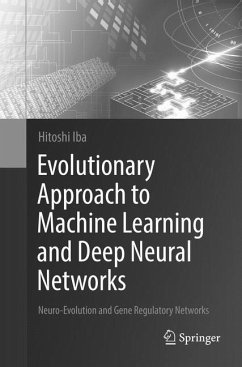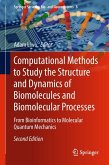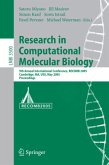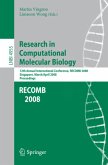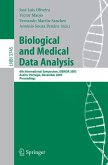This book provides theoretical and practical knowledge about a methodology for evolutionary algorithm-based search strategy with the integration of several machine learning and deep learning techniques. These include convolutional neural networks, Gröbner bases, relevance vector machines, transfer learning, bagging and boosting methods, clustering techniques (affinity propagation), and belief networks, among others. The development of such tools contributes to better optimizing methodologies. Beginning with the essentials of evolutionary algorithms and covering interdisciplinary research topics, the contents of this book are valuable for different classes of readers: novice, intermediate, and also expert readers from related fields.
Following the chapters on introduction and basic methods, Chapter 3 details a new research direction, i.e., neuro-evolution, an evolutionary method for the generation of deep neural networks, and also describes how evolutionary methods are extendedin combination with machine learning techniques. Chapter 4 includes novel methods such as particle swarm optimization based on affinity propagation (PSOAP), and transfer learning for differential evolution (TRADE), another machine learning approach for extending differential evolution.
The last chapter is dedicated to the state of the art in gene regulatory network (GRN) research as one of the most interesting and active research fields. The author describes an evolving reaction network, which expands the neuro-evolution methodology to produce a type of genetic network suitable for biochemical systems and has succeeded in designing genetic circuits in synthetic biology. The author also presents real-world GRN application to several artificial intelligent tasks, proposing a framework of motion generation by GRNs (MONGERN), which evolves GRNs to operate a real humanoid robot.
Following the chapters on introduction and basic methods, Chapter 3 details a new research direction, i.e., neuro-evolution, an evolutionary method for the generation of deep neural networks, and also describes how evolutionary methods are extendedin combination with machine learning techniques. Chapter 4 includes novel methods such as particle swarm optimization based on affinity propagation (PSOAP), and transfer learning for differential evolution (TRADE), another machine learning approach for extending differential evolution.
The last chapter is dedicated to the state of the art in gene regulatory network (GRN) research as one of the most interesting and active research fields. The author describes an evolving reaction network, which expands the neuro-evolution methodology to produce a type of genetic network suitable for biochemical systems and has succeeded in designing genetic circuits in synthetic biology. The author also presents real-world GRN application to several artificial intelligent tasks, proposing a framework of motion generation by GRNs (MONGERN), which evolves GRNs to operate a real humanoid robot.
"The main aim of this work is to present and elaborate the bridge between theoretical approaches and the concrete, real-life challenges in genetics. ... the author's efforts to present these concepts in an accessible manner brings the edge of research within the reach of a wider audience. The examples and the algebraic formalism throughout, augmented by the relevant references ... open this field to undergraduates, postgraduates and established researchers alike and provide a solid starting point to more progressive research." (Irina Ioana Mohorianu, zbMATH 1394.68003, 2018)

